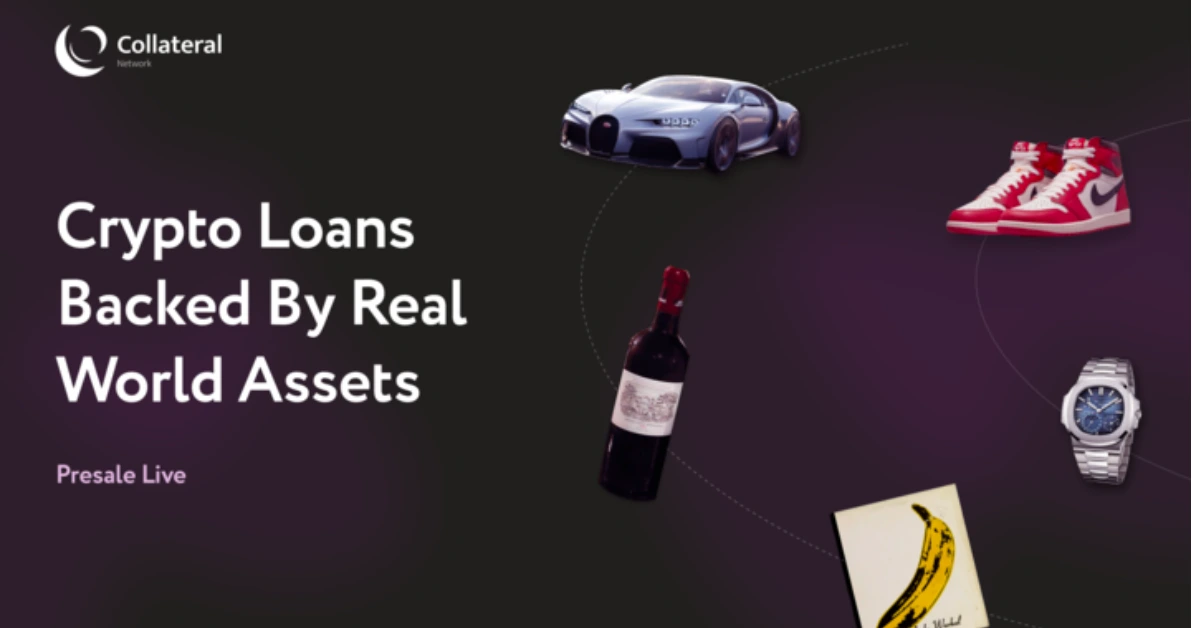Could Collateral Network (COLT) be the next big thing in cryptocurrency? Experts weigh in on its potential to surpass Bitcoin and Filecoin
Cryptocurrencies have been gaining more and more attention in recent years, with the most well-known being Bitcoin (BTC) and Filecoin (FIL). However, there is a new player on the scene that is starting to make waves: Collateral Network (COLT). In this article, we will take a closer look at Collateral Network (COLT) and why it is forecasted for 3500% gains over its presale, as well as what sets it apart from Bitcoin (BTC) and Filecoin (FIL).
Bitcoin’s (BTC) price volatility is a risk for long-term holders
While Bitcoin (BTC) has long been the king of cryptocurrency, it has faced a number of challenges in recent years. One of the most significant issues is scalability, as the network has struggled to process a high volume of transactions due to its limited capacity. This has led to high fees and long confirmation times, which can be frustrating for users.
Additionally, the energy consumption required to power the Bitcoin (BTC) network has come under scrutiny, with some experts arguing that it is not sustainable in the long term. Finally, Bitcoin’s (BTC) price has been highly volatile, with significant fluctuations over the years.
While this can be attractive for speculators looking to make a quick profit, it can also be risky for those who are looking to hold onto their Bitcoin (BTC) for a long term. Since its peak in 2021, Bitcoin (BTC) has seen a significant drop in value, losing more than 70%. At its highest, BTC was valued at over $68,000.
High cost of storage is a concern for Filecoin (FIL) users
Filecoin (FIL) is a decentralized storage network that allows users to buy and sell storage space using the Filecoin (FIL) token. While it has gained significant attention and adoption, it has also faced a number of challenges. One of the biggest issues for Filecoin (FIL) is the high cost of storage.
To participate in the network, users must purchase a certain amount of storage space, which can be expensive. This can be a barrier for those who are looking to use the network for small amounts of data. Another concern is the complex nature of the Filecoin (FIL) network, which can be difficult for non-technical users to understand. This can be a problem for those looking to use the network, but aren’t familiar with the underlying technology. The live price of Filecoin is $5.74.
Collateral Network (COLT) introduces NFT based crowdlending
So, what makes Collateral Network (COLT) different from Bitcoin (BTC) and Filecoin (FIL)?
As a new challenger lending platform, Collateral Network (COLT) is revolutionary in that it allows individuals to unlock cash from their assets on the blockchain through the use of fractionalized NFTs. This allows investors to become their own banks whilst earning a fixed interest rate.
Additionally, Collateral Network (COLT) offers a number of benefits to both borrowers and investors. For borrowers, the platform offers a fast turnaround time, with cash being available within 24 hours. Collateral Network (COLT) is transparent, with all contractual information stored in the metadata of the NFT, which is recorded on the public blockchain, and cannot be altered or changed. Collateral Network (COLT) has implemented a token lock-up period for its team tokens, which will last for three years. Additionally, the liquidity pool for COLT tokens is locked for 33 years.
Currently, the starting price for (COLT) tokens is $0.01, and some analysts are predicting a significant price increase of 35 times within the next six months. Out of the total supply of 1.4 billion Collateral Network (COLT) tokens, only 50% will be available for presale.
Find out more about the Collateral Network presale here:
Website: https://www.collateralnetwork.io/
Telegram: https://t.me/collateralnwk
Twitter: https://twitter.com/Collateralnwk
| Disclaimer: This is a press release post. Coinpedia does not endorse or is responsible for any content, accuracy, quality, advertising, products, or other materials on this page. Readers should do their own research before taking any actions related to the company. |
Credit: Source link































